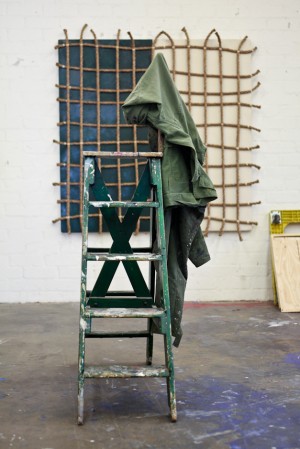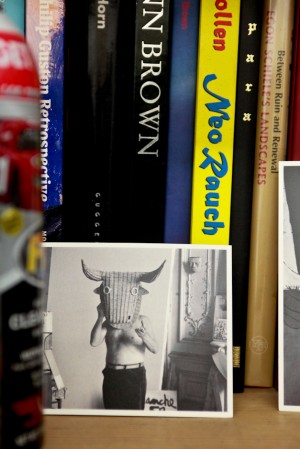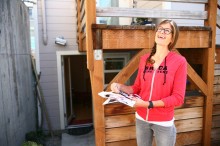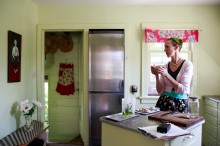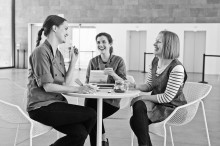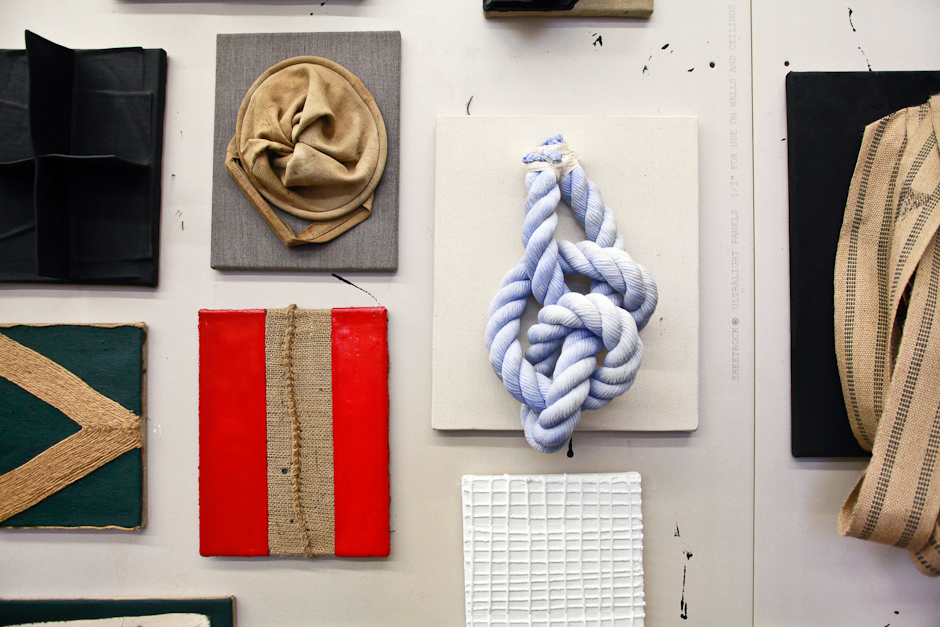
Samantha Thomas

“It took me so long to get here. But it was a natural progression.” Samantha said this about halfway through our visit. We were talking about her work, obviously. But more specifically, we were discussing the recent and distinctive direction it has taken. As we stood chatting in her enviably large Los Angeles studio, Samantha pulled out some older work for us to look at, paintings from 2006 and 2007—acrylic and oil works on canvas and sheets of plywood that imply abstracted landscapes and uncertain topography. While looking at Samantha’s past work and then looking again at all her newer pieces up on her studio walls, I couldn’t help but think that she was right— it did take her a while to get “here” and yet her trajectory reveals a certain consistency; a steady grappling with concerns regarding landscape and architecture and our fragmented understanding of place and space.
Samantha’s current body of work (which she began around 2011) is still painterly in approach, but explores the confines of the traditional canvas by building out from it with varied materials such as rope, thread, linen and burlap to create unexpected forms and a heightened sense of capacity. Her current work manages her interest in abstraction, architecture, and landscape well— the materials she chooses transform easily, eliciting a now-complicated-recognition in the viewer; structurally the pieces suggest stunning possibility in the way they play with perimeters, and yet still they work as a frame…to a view, a place, a perspective. Later on in our conversation Samantha expressed another thought concerning her present work, saying, “I consider this my first real body of work; it really feels like my work.” And I do think she’s right, I do think this is her first real body of work. It’s so incredible to think how true Samantha’s statement is for many of us… that often we have to work hard for years, we have to explore, and make, and try, and then we have to explore, make, and try all over again, and again… hammering away at the same ideas until finally our questions, affinities, and practices coalesce, and something fully formed emerges— work with a voice, a true voice that reveals an unmistakable point of view, an utterly distinguishable way of looking at the world around us.
The thing is, once we find that voice it doesn’t mean it always stays in our possession… we have to continually work for it, earning the right to keep it as our own.
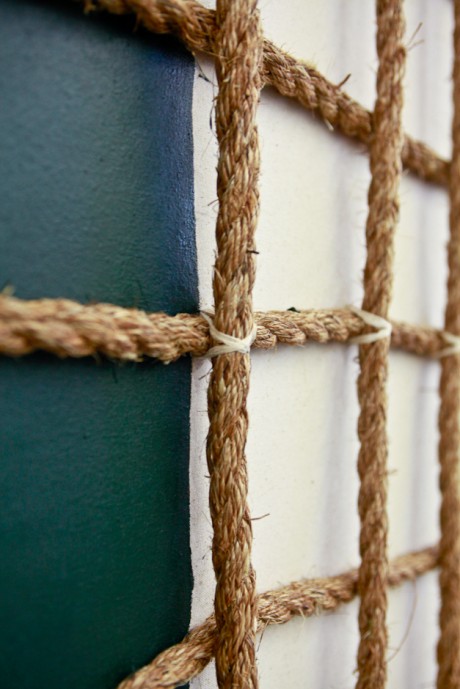
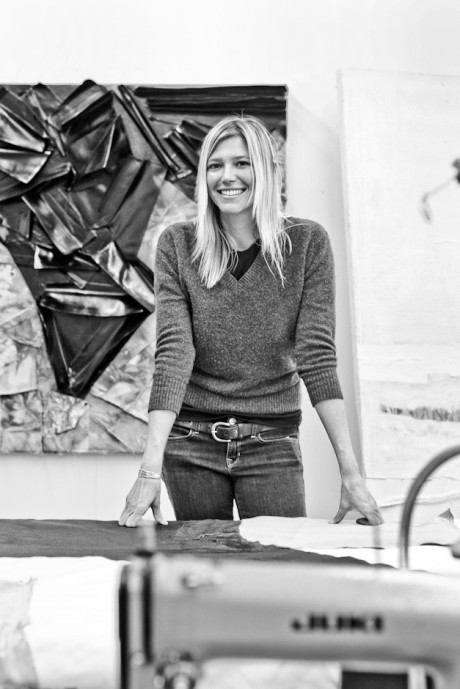
How would you describe your subject matter or the content of your work?
The Dutch word landschap means the appearance of a place— it came to be as artists started to frame nature in a single view. The whole notion of landscape to me is as abstract of an idea as the idea or representation of abstraction. The notion of place is really interesting to me, and the way in which we attempt to render it is so complex. The way in in which I experience landscape is often very fragmented, kinetic, and ever- changing. My work has always been rooted in the history of abstraction and landscape with an interest in sculpture and architecture. It has taken me a long time to get to this current body of work; I have given myself a lot of time to push forward and try new things. I’m more satisfied with where I’m at now because my many interests are finally coming together in a way that makes sense.

What mediums do you work with?
Linen, thread, rope, burlap, canvas, acrylic paint, oil paint, spray paint, and enamel.
The way in which you layer and collage your materials is sculptural, but you seem to come to your work with a painterly approach— can you tell us more about your process?
I definitely consider myself a painter, and am involved in its history and dialogue. Much of my work has references to painters before me, either by using materials, signs, or expanding on ideas in which they worked. I think it’s important to recognize and be aware of what came before you. My process changes often, because I want the works to be different from each other, but all speak the same or similar language. Sewing would be the constant in my practice; since it is so versatile it can act as a binding device, a line, etc. Interestingly, I don’t come from a sewing background— it’s just something I began to do to explore other ways of making line.
I don’t sketch, but I make small works, which sort of act as a sketchbook in terms of what materials, colors, and forms I’m interested in and use them to investigate my ideas of abstraction.
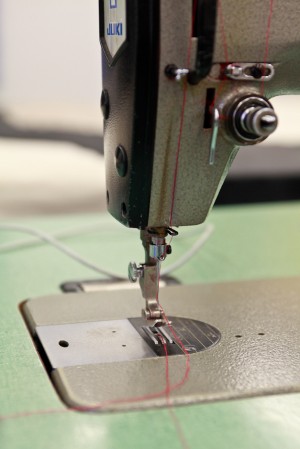
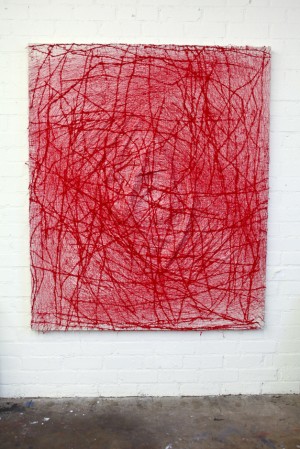
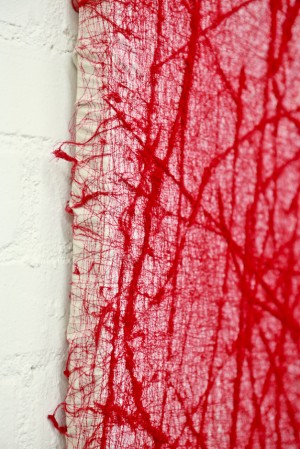
What are you presently inspired by— are there particular things you are reading, listening to or looking at to fuel your work?
Cloud Atlas by David Mitchell has proven to be an interesting read in that it weaves histories, dialogues, and landscapes together. The last novels I read were Roberto Bolano’s The Savage Detectives and 2666, which gave a great description of the Latin American landscape as well as spectacularly interweaving stories.
What does having a physical space to make art in mean for your process, and how do you make your space work for you?
I think that it’s huge. Having a studio to make my work has always been a priority. It’s important for me to go somewhere and make a mess. My studio is broken up into sections: when in production there is the sewing station, painting station, sanding station, and this is so I can be working on different things at the same time.

Is there something you are currently working on, or are excited about starting that you can tell us about?
I just finished this piece that is completely covered in red thread. I was trying to find an interesting way for color to enter the work and so I got on the sewing machine and went crazy trying to create a background. It took me two and a half months of sewing for six hours a day to finish. It kind of became its own thing. It’s really different from the rest of the series, but I think it might be my favorite so far and will be a great direction for future works.

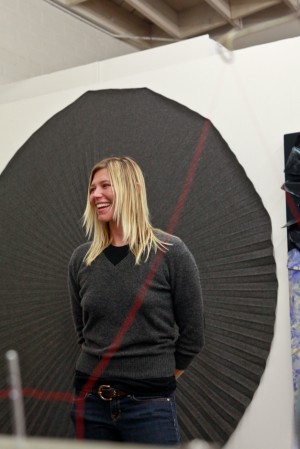

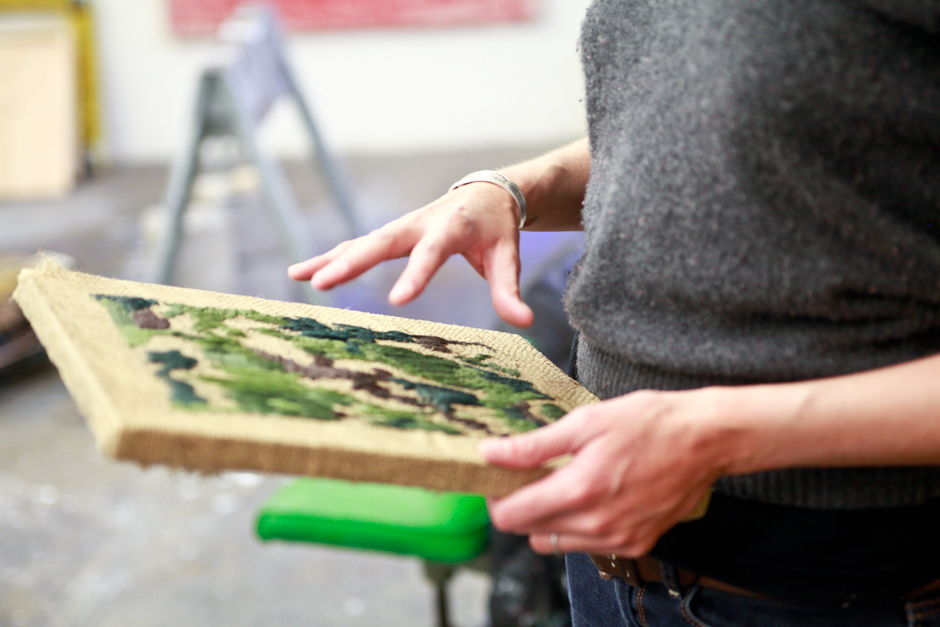
Do you see your work as relating to any current movement or direction in visual art or culture? Which other artists might your work be in conversation with?
I don’t know if there is a name for the current movement or how current that would be. I definitely am referencing post war and Arte Povera, by using the material with a different approach to painting. I think my work has dialogue with Blinky Palermo, Sal Scarpitta, Sergej Jensen, and Steven Parrino. I don’t know that there is a direct conversation, but artists that I love are Rosemarie Trockel and Alighiero Boetti. I am heavily influenced by the architecture of Frank Gehry.
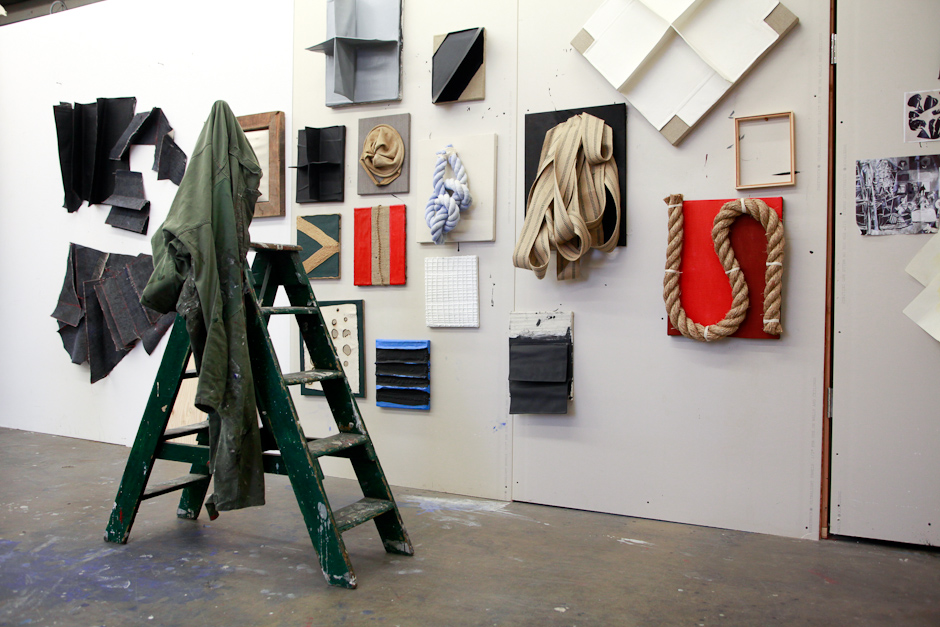
How do you navigate the art world?
I don’t have a gallery so I go see shows, have people come over for studio visits, and this year I made a website so people can see what I’m up to. The website has really brought new interest in my work, which keeps me motivated. Before putting the website up I was careful about putting my work out in the world and now I finally feel confident in where the work is at so I’m staying more proactive and working harder to encounter opportunities. I do want to be represented, to work closely with a gallery that has international exposure and that offers the possibility for dialogue with other artists. But I’m careful about who I work with so I’m just trying to be patient and stay dedicated to the work.
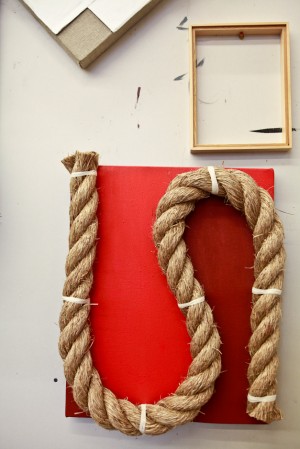
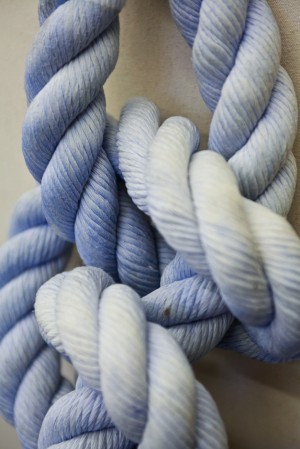
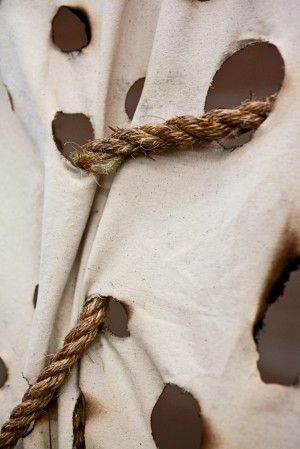

Are you involved in any upcoming shows or events? Where and when?
I have a show in NYC this coming November (2013) at RH Contemporary Art.
To see more of Samantha’s work:
www.samanthathomasart.com
